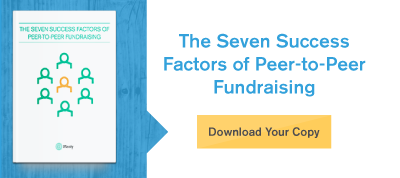Five Things We Learned In Our First Year At Plenty: #2 The Best Mission Statements Are One Sentence Long
2014 has been a big year for the Plenty team, and as we approach our first anniversary we are reflecting on the past year - our achievements, our failures and the lessons we have learned along the way. Our first lesson explored the triumphs the nonprofit space has seen this year and the need to surround yourself with people who are passionate, challenge you, and more than anything, believe there is plenty for everyone. Our second lesson revolves around your mission and the need for simplicity.
A good place to begin is to consider the following - can you recite your organization’s mission word for word? Chances are you and others at your organization find this task difficult. In fact, many nonprofit employees struggle with this despite the painstaking effort that went into crafting it. From choosing just the right words to refining it down to the key points, the process is often long and meticulous. But if you and your staff can’t properly articulate your mission, it isn’t likely that your constituents will be able to either, and almost certain the general public won’t be able to at all.
At best, most nonprofits are roughly recalled by who or what they serve and one action word. Some examples we’ve heard are below:
- JDRF – helps kids with diabetes
- Make-A-Wish – grants wishes of dying kids
- American Cancer Society – helps people with cancer
- LIVESTRONG – helps people with cancer
- American Diabetes Association – helps people with diabetes
- American Lung Association – helps people with lung cancer
- National Wildlife Federation – protects the environment
- National Multiple Sclerosis Society – helps those with MS
- American Kidney Fund – helps those with kidney disease
- Susan G. Komen – funds breast cancer research
So how can nonprofits serving the same cause differentiate themselves from one another when the public views them as extensions of vague and slightly ambiguous taglines? The answer is they almost certainly can’t. Therefore the question it really begs is how can we educate the public in a memorable way so they have a better understanding of the specific role we each play? You can begin to amend this by crafting a mission statement that is clear, concise, compelling and uniquely yours. Keep the following concepts in mind as you create or update your mission statement:
Don’t use lengthy mission statements externally.
Lengthy mission statements and taglines that insist on articulating all aspects of your organization’s efforts are not effective. There is a time and place for the longer internal mission statement, and a time and place for external, public facing messaging that communicates the over-arching purpose of your organization. Make sure to understand the impact that your expanded and abbreviated mission statements have on the audience and where it is appropriate to use them.
Any medium that requires less text and in which your audience has a shorter attention span, such as social media or web-ads, is a good example of when your abbreviated mission statement should be used. The goal is to be succinct and compelling in these scenarios.
Start with your purpose and expand from there.
So what should your purpose sound like when you have different types of audiences? Fortunately for nonprofits, all of your audiences will have one thing in common – your cause. Easy so far, right? It’s breast cancer, brain tumors, arthritis, cats, dogs, elephants, the air, the environment, firemen, police, etc., your purpose is your cause.
Write your purpose down and then decide what kind of organization you are primarily – do you provide services? Fund research? Curate information? Educate? Advocate? Something else? This is not to say that your organization can’t do multiple things, but you must lead with something, and focus on a purpose that positions you competitively within the landscape.
Ask yourself - what is the end game?
If you are asking the public to trust you, partner with you or support you, you will need to confidently state what you’re working toward. People want to join and come aboard organized communities that have direction and a goal. So, what is yours? State the why or “so what” so people know the vision you are striving for.
Maybe your organization funds cancer research until a cure is found, or advocates for the preservation of our environment for the health of future generations, or shares information on living with hemophilia so those diagnosed can live higher quality lives. Whatever your end goal is make sure to clearly articulate it so others can understand the shared goal and work alongside you to achieve it.
The key is to provide enough additional juicy information in memorable bite size amounts of language to help your nonprofit rise above the fray. Remember, be selective and concise in the language you use, focus on your purpose, and understand and explicitly state your end goal. These steps will help ensure your internal staff and constituent networks are aligned around your most important message – your mission.
Subscribe to our blog today to receive the latest peer-to-peer fundraising advice!
Share this
You May Also Like
These Related Stories

The Secret Behind Every Great Mission Statement

Seven Things Keeping You From Peer-to-Peer Fundraising Success




No Comments Yet
Let us know what you think